-
Scale model WWII-era plane flies with fuel from the sea

U.S. Navy researchers demonstrated proof-of-concept of novel technologies developed for the recovery of carbon dioxide (CO2) and hydrogen (H2) from seawater and conversion to a liquid hydrocarbon fuel. Fueled by a liquid hydrocarbon — a component of NRL’s novel gas-to-liquid (GTL) process which uses CO2 and H2 as feedstock — the research team demonstrated sustained flight of a radio-controlled (RC) P-51 replica of the legendary Red Tail Squadron, powered by an off-the-shelf (OTS) and unmodified two-stroke internal combustion engine.
-
-
DARPA launches Biological Technologies Office
DARPA has established a new technology office — the Biological Technologies Office (BTO) — which will merge biology, engineering, and computer science to harness the power of natural systems for national security. With the establishment of the new office last week, biology takes its place among the core sciences that represent the future of defense technology.
-
-
New center will work to improve methods to detect, prevent the spread of nuclear weapons
The National Nuclear Security Administration (NNSA) has awarded the University of Michigan $25 million to establish the Center for Verification Technology. A team from thirteen universities will work with eight national labs to analyze nuclear nonproliferation efforts, improve technologies for monitoring weapons-grade materials and detecting secret weapon tests, and train the next generation of nonproliferation experts.
-
-
Invisibility cloaks, stealth technology a step closer
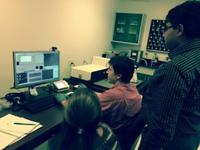
It may seem easy in Hollywood movies, but is hard to create invisibility cloaks in real life because no material in nature has the properties necessary to bend light in such a way. Scientists have managed to create artificial nanostructures that can do the job, called metamaterials. The challenge, however, has been making enough of the material to turn science fiction into a practical reality.
-
-
Prosecutors ask for confidentiality in NY “Death Ray” case
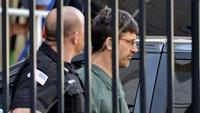
Glendon Scott Crawford,a former General Electric Co. industrial mechanic, is standing trails in Albany, New York, for developed a radiological dispersal device which he tried to sell to both the KKK and to Jewish organizations so they could use it to kill Muslims. Several experts argued the device would not work since it would require massive amounts of electricity, weigh enough to crush most vehicles and would require victims to remain still in order to face prolonged exposure from close-range radiation.
-
-
World record in high altitude wind turbine set to be broken
Boston, Massachusetts-based Altaeros Energies, a wind energy company formed out of MIT, said its Alaska demonstration project is set to break the world record for the highest wind turbine ever deployed. The $1.3 million, 18-month project will deploy the Altaeros BAT at a height 1,000 feet above ground. At that height, the BAT commercial-scale pilot project in Alaska will be over 275 feet taller than the current record holder for the highest wind turbine, the Vestas V164-8.0-MW. Investment into the high altitude wind sector has recently gained momentum with several large acquisitions.
-
-
New infrared technique remotely to detect dangerous materials
Researchers say that infrared technology holds the potential to spot from afar whether a site is being used to make nuclear weapons. They developed a model which precisely characterizes the material in each pixel of an image taken from a long-wave infrared camera. The U.S. National Nuclear Security Administration (NNSA) funded the project. The government’s long-term goal for infrared technology is remotely to detect the exact materials, chemicals and gases coming and going from factories or other sites suspected of illegal nuclear production.
-
-
DARPA Grand Challenge: Ten years on
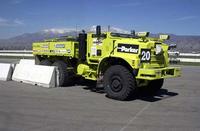
At the break of dawn on 13 March 2004, fifteen vehicles left a starting gate in the desert outside of Barstow, California, to make history in the DARPA Grand Challenge, a first-of-its-kind race to foster the development of self-driving ground vehicles. It is not easy to quantify the effects of these DARPA challenges on the development and deployment of autonomous vehicle technology, but ten years later defense and commercial applications are proliferating. The rapid evolution of the technology and rules for how to deploy it are being driven by the information technology and automotive industries, academic and research institutions, the Defense Department and its contractors, and federal and state transportation agencies.
-
-
Innovative solar-powered toilet to be unveiled in India next week
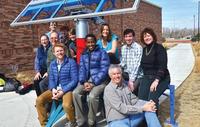
Unsafe methods to capture and treat human waste result in serious health problems and death — food and water tainted with pathogens from fecal matter results in the deaths of roughly 700,000 children each year. A revolutionary toilet fueled by the sun is being developed by University of Colorado Boulder researchers to help some of the 2.5 billion people around the world lacking safe and sustainable sanitation. It will be unveiled in India this month.
-
-
Compact UV laser for biological, chemical detection
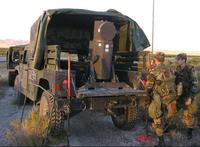
In addition to detecting chemical and biological agents in the field — or at home to protect against mass terror attacks — UV lasers have many other uses. The new class of UV lasers envisioned by DARPA’s Laser UV Sources for Tactical Efficient Raman (LUSTER) program is expected to be of use for a broad range of applications such as point-of-need medical diagnostics, advanced manufacturing, and compact atomic clocks.
-
-
Biometric security for mobile devices becoming mainstream
Biometric security such as fingerprint, face, and voice recognition is set to hit the mainstream as global technology companies market the systems as convenient and easy to use. The latest biometric technologies are not without their security issues, but they are marketed as more convenient than traditional methods rather than more secure, and encourage adoption by people who currently do not have any security on their phone at all.
-
-
Platform for operating systems would outwit cyber criminals
As smartphone use surges, consumers are just beginning to realize their devices are not quite as secure as they thought. A Swedish research team is working on a way to secure mobile operating systems so that consumers can be confident that their data is protected.
-
-
App helps save people trapped by avalanche
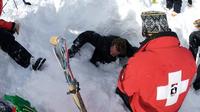
For the person buried under the weight of an avalanche, each minute is precious. A person saved from the snow mass within fifteen minutes has a 90 percent chance of survival. After forty-five minutes that chance has diminished considerably. Researchers develop an app that makes it possible for skiers with smartphones to find people buried in the snow.
-
-
Virtual lab for nuclear waste repository research
A nuclear waste repository must seal in radioactive waste safely for one million years. Researchers currently have to study repositories and their processes in real underground laboratories, but a virtual underground laboratory will soon simplify their work.
-
-
Unsupervised robotic construction crew to build flood defenses
On the plains of Namibia, millions of tiny termites are building a mound of soil — an 8-foot-tall “lung” for their underground nest. They do so without a supervisor, foreman, or CEO to tell them what to do. During a year of construction, many termites will live and die, wind and rain will erode the structure, and yet the colony’s life-sustaining project will continue. Harvard researchers, inspired by the termites’ resilience and collective intelligence, have created an autonomous robotic construction crew. The system needs no supervisor, no eye in the sky, and no communication: just simple robots — any number of robots — that cooperate by modifying their environment. In the future, similar robots could lay sandbags in advance of a flood, or perform simple construction tasks on Mars.
-
More headlines
The long view
New Technology is Keeping the Skies Safe
DHS S&T Baggage, Cargo, and People Screening (BCP) Program develops state-of-the-art screening solutions to help secure airspace, communities, and borders
Factories First: Winning the Drone War Before It Starts
Wars are won by factories before they are won on the battlefield,Martin C. Feldmann writes, noting that the United States lacks the manufacturing depth for the coming drone age. Rectifying this situation “will take far more than procurement tweaks,” Feldmann writes. “It demands a national-level, wartime-scale industrial mobilization.”
How Artificial General Intelligence Could Affect the Rise and Fall of Nations
Visions for potential AGI futures: A new report from RAND aims to stimulate thinking among policymakers about possible impacts of the development of artificial general intelligence (AGI) on geopolitics and the world order.
Keeping the Lights on with Nuclear Waste: Radiochemistry Transforms Nuclear Waste into Strategic Materials
How UNLV radiochemistry is pioneering the future of energy in the Southwest by salvaging strategic materials from nuclear dumps –and making it safe.
Model Predicts Long-Term Effects of Nuclear Waste on Underground Disposal Systems
The simulations matched results from an underground lab experiment in Switzerland, suggesting modeling could be used to validate the safety of nuclear disposal sites.
